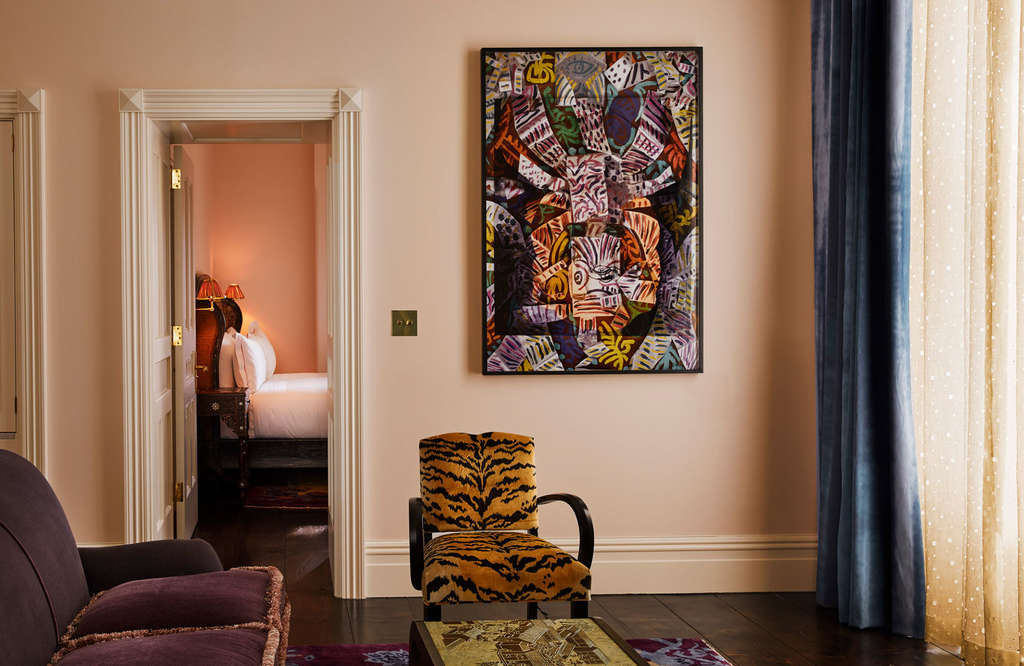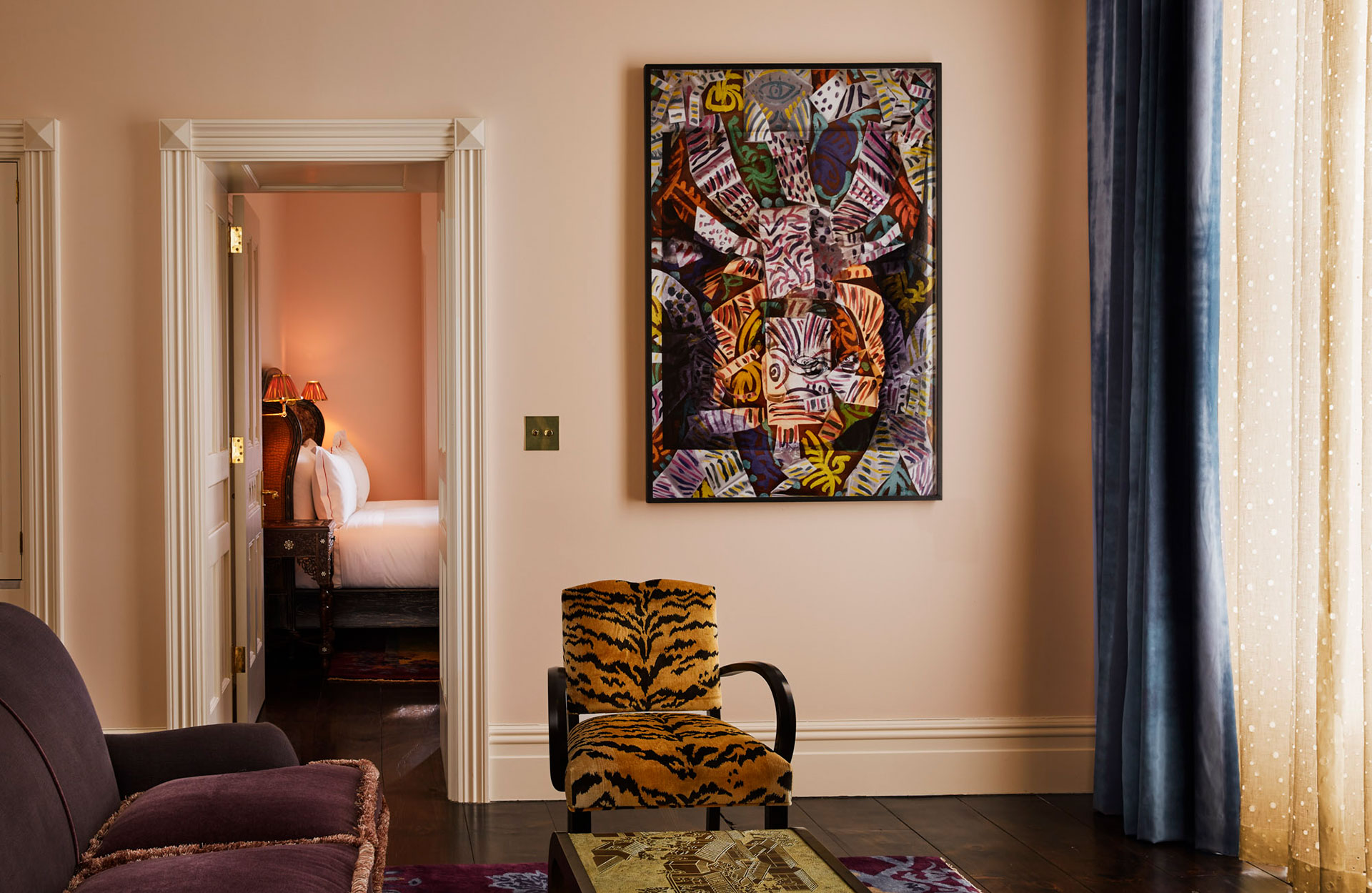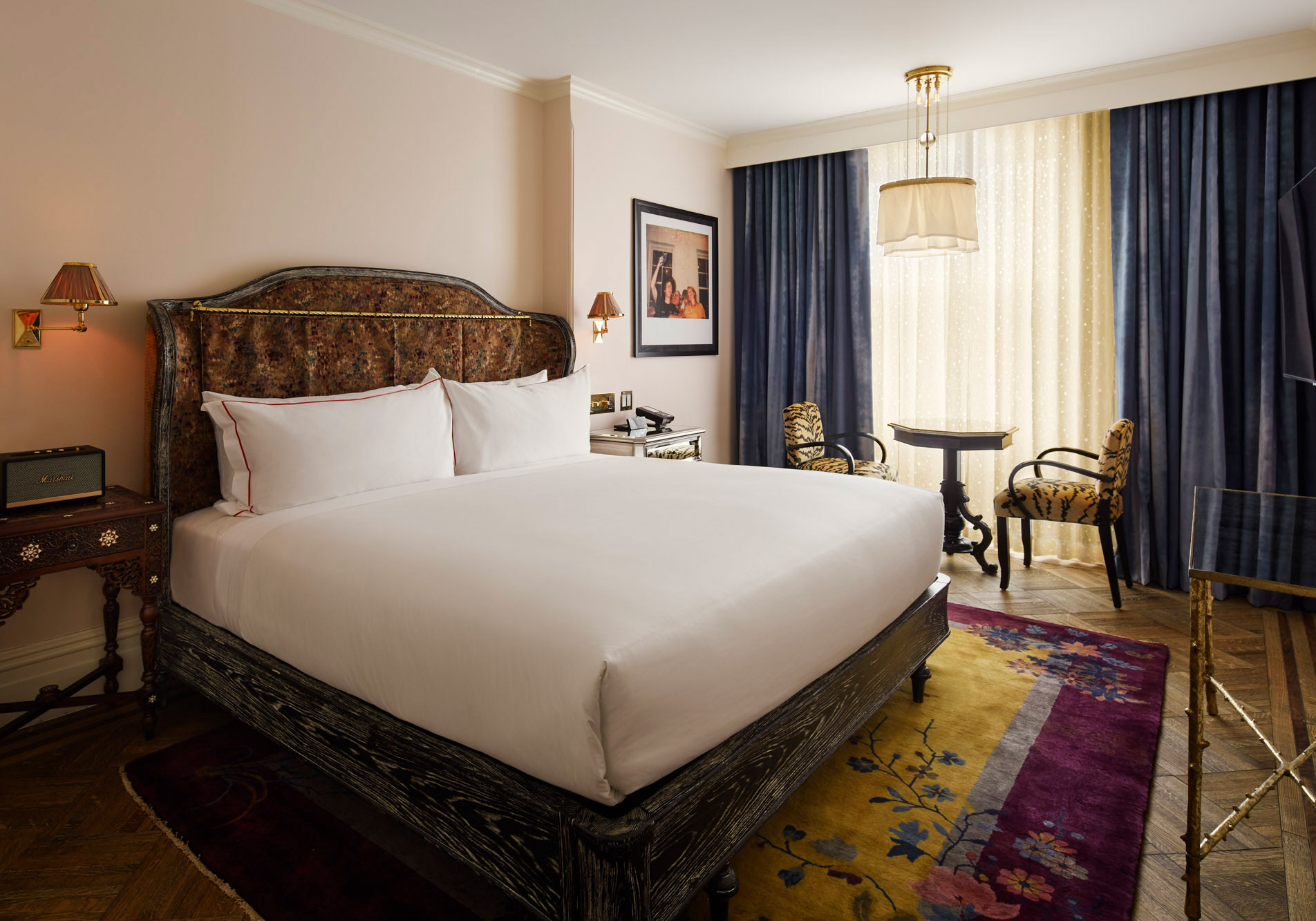New York's Most Famous Hotel Rises Again
The Chelsea Hotel is back. The New York landmark and one-time home to dozens of the city’s most famous residents has been reinvented and is ready for its big reveal.

The Hotel Chelsea is one of those interesting thought experiments about the good old days in New York City — about wishing you had been there back then, back when it was all happening, back before everything changed, back before the banks and the Starbucks and the pilates studios camped out on every corner. On the surface, the history of the Chelsea reads like a fairytale of sorts, an almost too perfect confluence of place and personalities. Yet while many of the guests were glamorous, the hotel itself, in its heyday, wasn’t exactly a bastion of first-class accommodation. Some rooms, like the one Leonard Cohen rented during his fling with Janis Joplin — immortalized in the song “Chelsea Hotel #2” — were shabby and dated even by 1968 standards, and that didn’t change much in the intervening years.
None of that has ever mattered, though. The Chelsea was a “house of infinite toleration” where the maids rarely ran their vacuum cleaners, as Arthur Miller explained in his essay, “The Chelsea Affect.” Residents got out of each room what they put into it, making a DIY wonderland from the bones of the brilliant old building. The spunk and soul of its inhabitants made the hotel legendary, just like Soho lofts in the ’80s, Village walkups in the ’60s, or Williamsburg warehouses in the ’00s. To want to revisit these periods is to want to be young again, when we’d happily concede certain comforts in exchange for action and intrigue and the promise that we’d have absolutely no idea what might happen next.
But do we really want to go back? Or do we just want to be a tourist to the good times, skipping all the boring bits and unpleasant parts? Because while the Hotel Chelsea is the place where Bob Dylan stayed up for days to write “Sad Eyed Lady of the Lowlands” for his new wife Sara, and where Miller resurrected the ghost of Marilyn Monroe for his play After the Fall, and where Patti Smith came of age with Robert Mapplethorpe. It’s also the place where Dee Dee Ramone lured heroin addicts like a magnet, where Dylan Thomas spent his last few torturous days, and where Nancy Spungeon bled to death from a stab wound to the stomach. Do we really want to go back?
These are the questions the new Chelsea asks. Not explicitly, but simply because the iconic property has been irrevocably changed — reinvented by acclaimed hoteliers Sean MacPherson, Ira Drukier, and Richard Born as the kind of impossibly cool luxury boutique hotel in which they specialize. To call this new direction controversial is an understatement. There were plenty of folks (most notably the Chelsea’s long-term tenants) who wanted the hotel to remain as it was, accessible to a whole new generation of artists. That’s a noble goal that even we could get behind — though it’s not clear it was ever in the cards. New York is different, and even the same old places aren’t the same. For NYC in the early 21st century, the Chelsea’s evolution is an expected one, similar to its shift in the early 20th century from co-op housing to long-stay hotel.






